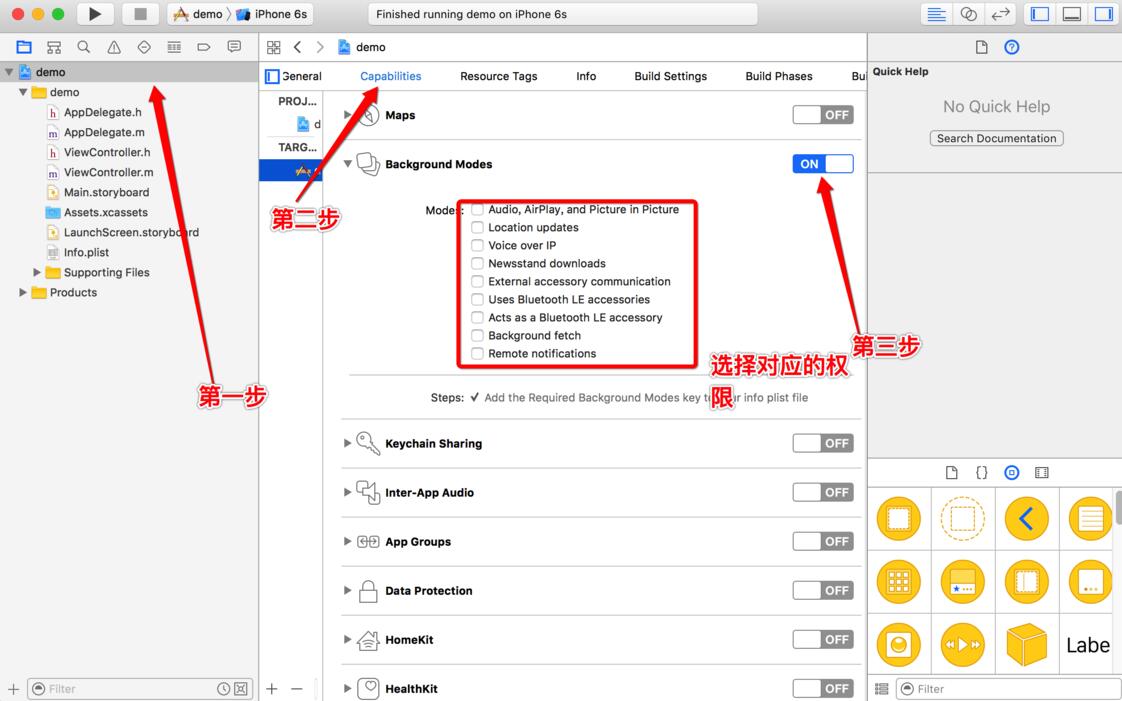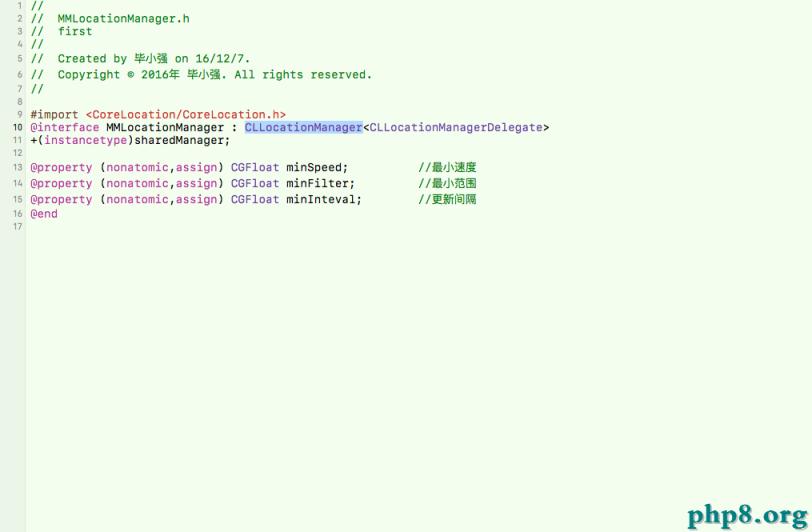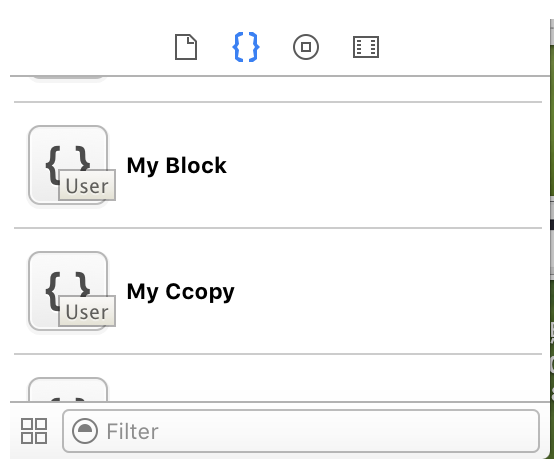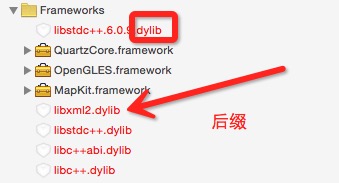iOS10適配問題及解決方法 新鮮出爐!
隨著iOS10發布的臨近,大家的App都需要適配iOS10,下面是我總結的一些關於iOS10適配方面的問題,如果有錯誤,歡迎指出.
1.系統判斷方法失效:
在你的項目中,當需要判斷系統版本的話,不要使用下面的方法:
復制代碼 代碼如下:#define isiOS10 ([[[[UIDevice currentDevice] systemVersion] substringToIndex:1] intValue]>=10)
它會永遠返回NO,substringToIndex:1在iOS 10 會被檢測成 iOS 1了,
應該使用下面的這些方法:
Objective-C 中這樣寫:
#define SYSTEM_VERSION_EQUAL_TO(v) ([[[UIDevice currentDevice] systemVersion] compare:v options:NSNumericSearch] == NSOrderedSame) #define SYSTEM_VERSION_GREATER_THAN(v) ([[[UIDevice currentDevice] systemVersion] compare:v options:NSNumericSearch] == NSOrderedDescending) #define SYSTEM_VERSION_GREATER_THAN_OR_EQUAL_TO(v) ([[[UIDevice currentDevice] systemVersion] compare:v options:NSNumericSearch] != NSOrderedAscending) #define SYSTEM_VERSION_LESS_THAN(v) ([[[UIDevice currentDevice] systemVersion] compare:v options:NSNumericSearch] == NSOrderedAscending) #define SYSTEM_VERSION_LESS_THAN_OR_EQUAL_TO(v) ([[[UIDevice currentDevice] systemVersion] compare:v options:NSNumericSearch] != NSOrderedDescending)
或者使用:
復制代碼 代碼如下:if ([[NSProcessInfo processInfo] isOperatingSystemAtLeastVersion:(NSOperatingSystemVersion){.majorVersion = 9, .minorVersion = 1, .patchVersion = 0}]) { NSLog(@"Hello from > iOS 9.1");}
if ([NSProcessInfo.processInfo isOperatingSystemAtLeastVersion:(NSOperatingSystemVersion){9,3,0}]) { NSLog(@"Hello from > iOS 9.3");}
或者使用:
復制代碼 代碼如下:if (NSFoundationVersionNumber > NSFoundationVersionNumber_iOS_9_0) { // do stuff for iOS 9 and newer} else { // do stuff for older versions than iOS 9}
有時候會缺少一些常量,NSFoundationVersionNumber是在NSObjCRuntime.h中定義的,作為Xcode7.3.1的一部分,我們設定常熟范圍從iPhone OS 2到#define NSFoundationVersionNumber_iOS_8_4 1144.17,在iOS 10(Xcode 8)中,蘋果補充了缺少的數字,設置有未來的版本.
#define NSFoundationVersionNumber_iOS_9_0 1240.1 #define NSFoundationVersionNumber_iOS_9_1 1241.14 #define NSFoundationVersionNumber_iOS_9_2 1242.12 #define NSFoundationVersionNumber_iOS_9_3 1242.12 #define NSFoundationVersionNumber_iOS_9_4 1280.25 #define NSFoundationVersionNumber_iOS_9_x_Max 1299
Swift中這樣寫:
if NSProcessInfo().isOperatingSystemAtLeastVersion(NSOperatingSystemVersion(majorVersion: 10, minorVersion: 0, patchVersion: 0)) {
// 代碼塊
}
或者使用
if #available(iOS 10.0, *) {
// 代碼塊
} else {
// 代碼塊
}
2.隱私數據訪問問題:
你的項目中訪問了隱私數據,比如:相機,相冊,聯系人等,在Xcode8中打開編譯的話,統統會crash,控制台會輸出下面這樣的日志:

這是因為iOS對用戶的安全和隱私的增強,在申請很多私有權限的時候都需要添加描述,但是,在使用Xcode 8之前的Xcode還是使用系統的權限通知框.
要想解決這個問題,只需要在info.plist添加NSContactsUsageDescription的key, value自己隨意填寫就可以,這裡列舉出對應的key(Source Code模式下):
<!-- 相冊 --> <key>NSPhotoLibraryUsageDescription</key> <string>App需要您的同意,才能訪問相冊</string> <!-- 相機 --> <key>NSCameraUsageDescription</key> <string>App需要您的同意,才能訪問相機</string> <!-- 麥克風 --> <key>NSMicrophoneUsageDescription</key> <string>App需要您的同意,才能訪問麥克風</string> <!-- 位置 --> <key>NSLocationUsageDescription</key> <string>App需要您的同意,才能訪問位置</string> <!-- 在使用期間訪問位置 --> <key>NSLocationWhenInUseUsageDescription</key> <string>App需要您的同意,才能在使用期間訪問位置</string> <!-- 始終訪問位置 --> <key>NSLocationAlwaysUsageDescription</key> <string>App需要您的同意,才能始終訪問位置</string> <!-- 日歷 --> <key>NSCalendarsUsageDescription</key> <string>App需要您的同意,才能訪問日歷</string> <!-- 提醒事項 --> <key>NSRemindersUsageDescription</key> <string>App需要您的同意,才能訪問提醒事項</string> <!-- 運動與健身 --> <key>NSMotionUsageDescription</key> <string>App需要您的同意,才能訪問運動與健身</string> <!-- 健康更新 --> <key>NSHealthUpdateUsageDescription</key> <string>App需要您的同意,才能訪問健康更新 </string> <!-- 健康分享 --> <key>NSHealthShareUsageDescription</key> <string>App需要您的同意,才能訪問健康分享</string> <!-- 藍牙 --> <key>NSBluetoothPeripheralUsageDescription</key> <string>App需要您的同意,才能訪問藍牙</string> <!-- 媒體資料庫 --> <key>NSAppleMusicUsageDescription</key> <string>App需要您的同意,才能訪問媒體資料庫</string>
如果不起作用,可以請求後台權限,類似於這樣:
<key>UIBackgroundModes</key> <array> <!-- 在這裡寫上你在後台模式下要使用權限對應的key --> <string>location</string> ... </array>
或者在Xcode裡選中當前的target,選擇Capabilities,找到Background Modes,打開它,在裡面選擇對應權限

3.UIColor的問題
官方文檔中說:大多數core開頭的圖形框架和AVFoundation都提高了對擴展像素和寬色域色彩空間的支持.通過圖形堆棧擴展這種方式比以往支持廣色域的顯示設備更加容易。現在對UIKit擴展可以在sRGB的色彩空間下工作,性能更好,也可以在更廣泛的色域來搭配sRGB顏色.如果你的項目中是通過低級別的api自己實現圖形處理的,建議使用sRGB,也就是說在項目中使用了RGB轉化顏色的建議轉換為使用sRGB,在UIColor類中新增了兩個api:
- (UIColor *)initWithDisplayP3Red:(CGFloat)displayP3Red green:(CGFloat)green blue:(CGFloat)blue alpha:(CGFloat)alpha NS_AVAILABLE_IOS(10_0); + (UIColor *)colorWithDisplayP3Red:(CGFloat)displayP3Red green:(CGFloat)green blue:(CGFloat)blue alpha:(CGFloat)alpha NS_AVAILABLE_IOS(10_0);
4.真彩色的顯示
真彩色的顯示會根據光感應器來自動的調節達到特定環境下顯示與性能的平衡效果,如果需要這個功能的話,可以在info.plist裡配置(在Source Code模式下):
<key>UIWhitePointAdaptivityStyle</key>
它有五種取值,分別是:
<string>UIWhitePointAdaptivityStyleStandard</string> // 標准模式 <string>UIWhitePointAdaptivityStyleReading</string> // 閱讀模式 <string>UIWhitePointAdaptivityStylePhoto</string> // 圖片模式 <string>UIWhitePointAdaptivityStyleVideo</string> // 視頻模式 <string>UIWhitePointAdaptivityStyleStandard</string> // 游戲模式
也就是說如果你的項目是閱讀類的,就選擇UIWhitePointAdaptivityStyleReading這個模式,五種模式的顯示效果是從上往下遞減,也就是說如果你的項目是圖片處理類的,你選擇的是閱讀模式,給選擇太好的效果會影響性能.
5.ATS的問題
1.在iOS 9的時候,默認非HTTS的網絡是被禁止的,我們可以在info.plist文件中添加NSAppTransportSecurity字典,將NSAllowsArbitraryLoads設置為YES來禁用ATS;
2.從2017年1月1日起,,所有新提交的 app 默認不允許使用NSAllowsArbitraryLoads來繞過ATS的限制,默認情況下你的 app 可以訪問加密足夠強的(TLS V1.2以上)HTTPS內容;
3.可以選擇使用NSExceptionDomains設置白名單的方式對特定的域名開放HTTP內容來通過審核,比如說你的應用集成了第三方的登錄分享SDK,可以通過這種方式來做,下面以新浪SDK作為示范(Source Code 模式下):
<key>NSAppTransportSecurity</key> <dict> <key>NSExceptionDomains</key> <dict> <key>sina.cn</key> <dict> <key>NSThirdPartyExceptionMinimumTLSVersion</key> <string>TLSv1.0</string> <key>NSThirdPartyExceptionRequiresForwardSecrecy</key> <false/> <key>NSIncludesSubdomains</key> <true/> </dict> <key>weibo.cn</key> <dict> <key>NSThirdPartyExceptionMinimumTLSVersion</key> <string>TLSv1.0</string> <key>NSThirdPartyExceptionRequiresForwardSecrecy</key> <false/> <key>NSIncludesSubdomains</key> <true/> </dict> <key>weibo. com</key> <dict> <key>NSThirdPartyExceptionMinimumTLSVersion</key> <string>TLSv1.0</string> <key>NSThirdPartyExceptionRequiresForwardSecrecy</key> <false/> <key>NSIncludesSubdomains</key> <true/> </dict> <key>sinaimg.cn</key> <dict> <key>NSThirdPartyExceptionMinimumTLSVersion</key> <string>TLSv1.0</string> <key>NSThirdPartyExceptionRequiresForwardSecrecy</key> <false/> <key>NSIncludesSubdomains</key> <true/> </dict> <key>sinajs.cn</key> <dict> <key>NSThirdPartyExceptionMinimumTLSVersion</key> <string>TLSv1.0</string> <key>NSThirdPartyExceptionRequiresForwardSecrecy</key> <false/> <key>NSIncludesSubdomains</key> <true/> </dict> <key>sina.com.cn</key> <dict> <key>NSThirdPartyExceptionMinimumTLSVersion</key> <string>TLSv1.0</string> <key>NSThirdPartyExceptionRequiresForwardSecrecy</key> <false/> <key>NSIncludesSubdomains</key> <true/> </dict> </dict> </dict>
4.在iOS 10 中info.plist文件新加入了NSAllowsArbitraryLoadsInWebContent鍵,允許任意web頁面加載,同時蘋果會用 ATS 來保護你的app;
5.安全傳輸不再支持SSLv3, 建議盡快停用SHA1和3DES算法;
6.UIStatusBar的問題:
在iOS10中,如果還使用以前設置UIStatusBar類型或者控制隱藏還是顯示的方法,會報警告,方法過期,如下圖:

上面方法到 iOS 10 不能使用了,要想修改UIStatusBar的樣式或者狀態使用下圖中所示的屬性或方法:
@property(nonatomic, readonly) UIStatusBarStyle preferredStatusBarStyle NS_AVAILABLE_IOS(7_0) __TVOS_PROHIBITED; // Defaults to UIStatusBarStyleDefault @property(nonatomic, readonly) BOOL prefersStatusBarHidden NS_AVAILABLE_IOS(7_0) __TVOS_PROHIBITED; // Defaults to NO - (UIStatusBarStyle)preferredStatusBarStyle NS_AVAILABLE_IOS(7_0) __TVOS_PROHIBITED; // Defaults to UIStatusBarStyleDefault - (BOOL)prefersStatusBarHidden NS_AVAILABLE_IOS(7_0) __TVOS_PROHIBITED; // Defaults to NO // Override to return the type of animation that should be used for status bar changes for this view controller. This currently only affects changes to prefersStatusBarHidden. - (UIStatusBarAnimation)preferredStatusBarUpdateAnimation NS_AVAILABLE_IOS(7_0) __TVOS_PROHIBITED; // Defaults to UIStatusBarAnimationFade
7.UITextField
在iOS 10 中,UITextField新增了textContentType字段,是UITextContentType類型,它是一個枚舉,作用是可以指定輸入框的類型,以便系統可以分析出用戶的語義.是電話類型就建議一些電話,是地址類型就建議一些地址.可以在#import <UIKit/UITextInputTraits.h>文件中,查看textContentType字段,有以下可以選擇的類型:
UIKIT_EXTERN UITextContentType const UITextContentTypeName NS_AVAILABLE_IOS(10_0);
UIKIT_EXTERN UITextContentType const UITextContentTypeNamePrefix NS_AVAILABLE_IOS(10_0);
UIKIT_EXTERN UITextContentType const UITextContentTypeGivenName NS_AVAILABLE_IOS(10_0);
UIKIT_EXTERN UITextContentType const UITextContentTypeMiddleName NS_AVAILABLE_IOS(10_0);
UIKIT_EXTERN UITextContentType const UITextContentTypeFamilyName NS_AVAILABLE_IOS(10_0);
UIKIT_EXTERN UITextContentType const UITextContentTypeNameSuffix NS_AVAILABLE_IOS(10_0);
UIKIT_EXTERN UITextContentType const UITextContentTypeNickname NS_AVAILABLE_IOS(10_0);
UIKIT_EXTERN UITextContentType const UITextContentTypeJobTitle NS_AVAILABLE_IOS(10_0);
UIKIT_EXTERN UITextContentType const UITextContentTypeOrganizationName NS_AVAILABLE_IOS(10_0);
UIKIT_EXTERN UITextContentType const UITextContentTypeLocation NS_AVAILABLE_IOS(10_0);
UIKIT_EXTERN UITextContentType const UITextContentTypeFullStreetAddress NS_AVAILABLE_IOS(10_0);
UIKIT_EXTERN UITextContentType const UITextContentTypeStreetAddressLine1 NS_AVAILABLE_IOS(10_0);
UIKIT_EXTERN UITextContentType const UITextContentTypeStreetAddressLine2 NS_AVAILABLE_IOS(10_0);
UIKIT_EXTERN UITextContentType const UITextContentTypeAddressCity NS_AVAILABLE_IOS(10_0);
UIKIT_EXTERN UITextContentType const UITextContentTypeAddressState NS_AVAILABLE_IOS(10_0);
UIKIT_EXTERN UITextContentType const UITextContentTypeAddressCityAndState NS_AVAILABLE_IOS(10_0);
UIKIT_EXTERN UITextContentType const UITextContentTypeSublocality NS_AVAILABLE_IOS(10_0);
UIKIT_EXTERN UITextContentType const UITextContentTypeCountryName NS_AVAILABLE_IOS(10_0);
UIKIT_EXTERN UITextContentType const UITextContentTypePostalCode NS_AVAILABLE_IOS(10_0);
UIKIT_EXTERN UITextContentType const UITextContentTypeTelephoneNumber NS_AVAILABLE_IOS(10_0);
UIKIT_EXTERN UITextContentType const UITextContentTypeEmailAddress NS_AVAILABLE_IOS(10_0);
UIKIT_EXTERN UITextContentType const UITextContentTypeURL NS_AVAILABLE_IOS(10_0);
UIKIT_EXTERN UITextContentType const UITextContentTypeCreditCardNumber NS_AVAILABLE_IOS(10_0);
8.UserNotifications(用戶通知)
iOS 10 中將通知相關的 API 都統一了,在此基礎上很多用戶定義的通知,並且可以捕捉到各個通知狀態的回調.以前通知的概念是:大家想接受的提前做好准備,然後一下全兩分發,沒收到也不管了,也不關心發送者,現在的用戶通知做成了類似於網絡請求,先發一個request得到response的流程,還封裝了error,可以在各個狀態的方法中做一些額外的操作,並且能獲得一些字段,比如發送者之類的.這個功能的頭文件是:#import <UserNotifications/UserNotifications.h>
主要有以下文件:
#import <UserNotifications/NSString+UserNotifications.h> #import <UserNotifications/UNError.h> #import <UserNotifications/UNNotification.h> #import <UserNotifications/UNNotificationAction.h> #import <UserNotifications/UNNotificationAttachment.h> #import <UserNotifications/UNNotificationCategory.h> #import <UserNotifications/UNNotificationContent.h> #import <UserNotifications/UNNotificationRequest.h> #import <UserNotifications/UNNotificationResponse.h> #import <UserNotifications/UNNotificationSettings.h> #import <UserNotifications/UNNotificationSound.h> #import <UserNotifications/UNNotificationTrigger.h> #import <UserNotifications/UNUserNotificationCenter.h> #import <UserNotifications/UNNotificationServiceExtension.h>
9.UICollectionViewCell的的優化
在iOS 10 之前,UICollectionView上面如果有大量cell,當用戶活動很快的時候,整個UICollectionView的卡頓會很明顯,為什麼會造成這樣的問題,這裡涉及到了iOS 系統的重用機制,當cell准備加載進屏幕的時候,整個cell都已經加載完成,等待在屏幕外面了,也就是整整一行cell都已經加載完畢,這就是造成卡頓的主要原因,專業術語叫做:掉幀.
要想讓用戶感覺不到卡頓,我們的app必須幀率達到60幀/秒,也就是說每幀16毫秒要刷新一次.
iOS 10 之前UICollectionViewCell的生命周期是這樣的:
1.用戶滑動屏幕,屏幕外有一個cell准備加載進來,把cell從reusr隊列拿出來,然後調用prepareForReuse方法,在這個方法裡面,可以重置cell的狀態,加載新的數據;
2.繼續滑動,就會調用cellForItemAtIndexPath方法,在這個方法裡面給cell賦值模型,然後返回給系統;
3.當cell馬上進去屏幕的時候,就會調用willDisplayCell方法,在這個方法裡面我們還可以修改cell,為進入屏幕做最後的准備工作;
4.執行完willDisplayCell方法後,cell就進去屏幕了.當cell完全離開屏幕以後,會調用didEndDisplayingCell方法.
iOS 10 UICollectionViewCell的生命周期是這樣的:
1.用戶滑動屏幕,屏幕外有一個cell准備加載進來,把cell從reusr隊列拿出來,然後調用prepareForReuse方法,在這裡當cell還沒有進去屏幕的時候,就已經提前調用這個方法了,對比之前的區別是之前是cell的上邊緣馬上進去屏幕的時候就會調用該方法,而iOS 10 提前到cell還在屏幕外面的時候就調用;
2.在cellForItemAtIndexPath中創建cell,填充數據,刷新狀態等操作,相比於之前也提前了;
3.用戶繼續滑動的話,當cell馬上就需要顯示的時候我們再調用willDisplayCell方法,原則就是:何時需要顯示,何時再去調用willDisplayCell方法;
4.當cell完全離開屏幕以後,會調用didEndDisplayingCell方法,跟之前一樣,cell會進入重用隊列.
在iOS 10 之前,cell只能從重用隊列裡面取出,再走一遍生命周期,並調用cellForItemAtIndexPath創建或者生成一個cell.
在iOS 10 中,系統會cell保存一段時間,也就是說當用戶把cell滑出屏幕以後,如果又滑動回來,cell不用再走一遍生命周期了,只需要調用willDisplayCell方法就可以重新出現在屏幕中了.
iOS 10 中,系統是一個一個加載cell的,二以前是一行一行加載的,這樣就可以提升很多性能;
iOS 10 新增加的Pre-Fetching預加載
這個是為了降低UICollectionViewCell在加載的時候所花費的時間,在 iOS 10 中,除了數據源協議和代理協議外,新增加了一個UICollectionViewDataSourcePrefetching協議,這個協議裡面定義了兩個方法:
- (void)collectionView:(UICollectionView *)collectionView prefetchItemsAtIndexPaths:(NSArray<NSIndexPath *> *)indexPaths NS_AVAILABLE_IOS(10_0); - (void)collectionView:(UICollectionView *)collectionView cancelPrefetchingForItemsAtIndexPaths:(NSArray<NSIndexPath *> *)indexPaths NS_AVAILABLE_IOS(10_0);
在ColletionView prefetchItemsAt indexPaths這個方法是異步預加載數據的,當中的indexPaths數組是有序的,就是item接收數據的順序;
CollectionView cancelPrefetcingForItemsAt indexPaths這個方法是可選的,可以用來處理在滑動中取消或者降低提前加載數據的優先級.
注意:這個協議並不能代替之前讀取數據的方法,僅僅是輔助加載數據.
Pre-Fetching預加載對UITableViewCell同樣適用.
10. UIRefreshControl的使用
在iOS 10 中, UIRefreshControl可以直接在UICollectionView和UITableView中使用,並且脫離了UITableViewController.現在RefreshControl是UIScrollView的一個屬性.
使用方法:
UIRefreshControl *refreshControl = [[UIRefreshControl alloc] init]; [refreshControl addTarget:self action:@selector(loadData) forControlEvents:UIControlEventValueChanged]; collectionView.refreshControl = refreshControl;
以上就是本文的全部內容,希望對大家的學習有所幫助,也希望大家多多支持本站。
- 上一頁:iOS10適配問題收集整理
- 下一頁:iOS10適配問題點總結




